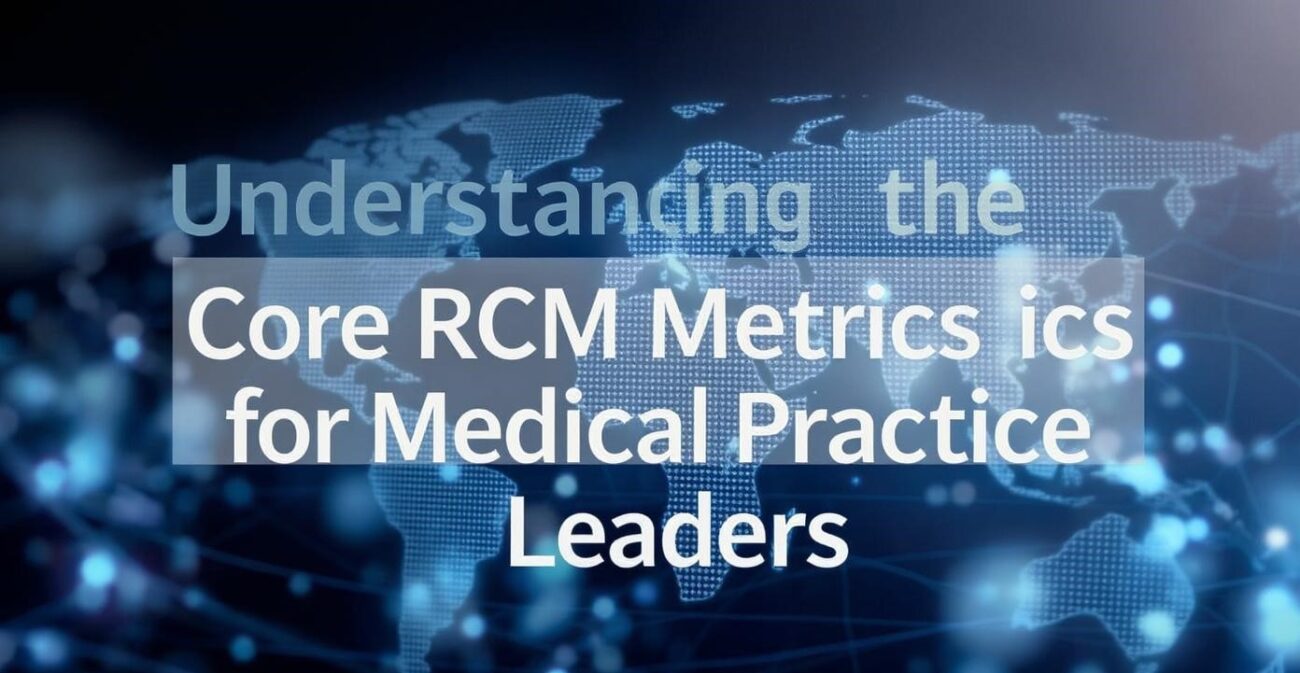In today’s healthcare landscape, financial operations must be as precise as clinical care. Medical practice leaders face a rising tide of billing complexities, payer rules, and patient financial responsibility. That’s why monitoring the 6 RCM Metrics every medical practice leader should know is crucial for sustainable profitability and operational excellence.
Whether you’re running a small specialty clinic or a large multi-provider group, revenue cycle management metrics offer visibility into areas that directly affect cash flow, billing efficiency, and long-term business viability.
1. Days in Accounts Receivable (A/R)
This foundational metric calculates how many days it takes, on average, to collect outstanding payments. It is one of the most critical 6 RCM metrics every medical practice leader should know, providing a clear window into your practice’s collection performance.
If Days in A/R creep beyond 35-40 days, it may indicate problems such as inefficient claims processing, slow patient payments, or frequent rejections. Maintaining A/R close to or under 30 days ensures healthy cash flow and improves your practice’s financial predictability.
2. Clean Claim Rate (CCR)
Clean Claim Rate reflects the percentage of claims accepted and processed by payers on the first attempt without errors or modifications. A low CCR often leads to additional work, longer reimbursement timelines, and increased administrative expenses.
As one of the 6 RCM metrics every medical practice leader should know, CCR showcases the effectiveness of front-end processes like eligibility verification and coding accuracy. Practices should aim for a clean claim rate above 90% to maximize efficiency and reduce payment cycles.
3. Denial Rate
Denied claims create delays, increase operational costs, and affect patient satisfaction. Denial Rate measures the proportion of total submitted claims that are rejected by payers due to documentation errors, coding inaccuracies, or missing information.
Within the list of 6 RCM metrics every medical practice leader should know, this metric is vital for uncovering systemic process failures. Reducing denial rates to under 5% can significantly boost collections while lowering the burden on billing staff.
4. Net Collection Rate
This KPI evaluates the actual revenue collected compared to what your practice is entitled to receive after payer adjustments. It is a core performance indicator that highlights your ability to turn expected revenue into realized revenue.
Among the 6 RCM metrics every medical practice leader should know, Net Collection Rate offers the most realistic view of your billing efficiency. Anything under 95% often signals issues such as uncollected balances, underbilling, or insufficient follow-up.
5. Patient Collection Rate
In an age of high-deductible plans and growing patient financial responsibility, collecting from patients has become more important than ever. Patient Collection Rate tracks the percentage of patient balances successfully collected.
As one of the 6 RCM metrics every medical practice leader should know, it underscores the effectiveness of front-desk collection processes, billing transparency, and patient communication. Practices that exceed an 80% patient collection rate are better equipped to maintain revenue integrity.
6. First Pass Resolution Rate (FPRR)
FPRR measures the percentage of claims resolved and paid on the first submission. A high FPRR indicates a streamlined and well-functioning billing workflow, while a low rate suggests frequent rework, resubmissions, and administrative drain.
This metric, essential among the 6 RCM metrics every medical practice leader should know, helps quantify how smoothly your practice processes claims. A strong FPRR—ideally above 85%—leads to lower costs, faster collections, and reduced labor.
Building an RCM-Focused Culture
Tracking the 6 RCM metrics every medical practice leader should know is only the beginning. Practice leaders must embed these KPIs into organizational culture. When staff across departments understand how their roles influence these metrics, accountability and performance naturally improve.
Integrating metric reviews into regular staff meetings, performance reports, and training initiatives fosters transparency and drives continual improvement.
Using Dashboards and Analytics to Stay Proactive
Technology is a key enabler for successfully monitoring the 6 RCM metrics every medical practice leader should know. Advanced practice management systems and RCM platforms provide real-time dashboards, trend visualizations, and customizable reports that support informed decision-making.
AI-enabled tools can also identify denial patterns, predict claim issues, and recommend preventive actions—turning reactive billing into proactive financial leadership.
Why Ignoring These Metrics Risks Financial Instability
Neglecting these KPIs can lead to missed revenue opportunities, rising accounts receivable, poor patient satisfaction, and even compliance issues. Leaders who fail to prioritize the 6 RCM metrics every medical practice leader should know may find themselves struggling to maintain operational continuity, especially in today’s volatile healthcare economy.
Conversely, those who embrace data-driven revenue cycle leadership can improve margins, streamline workflows, and support a better patient financial experience—all while staying ahead of payer policies and regulatory changes
Read Full Article : https://businessinfopro.com/6-rcm-metrics-every-medical-practice-leader-should-know/
About Us: Businessinfopro is a trusted platform delivering insightful, up-to-date content on business innovation, digital transformation, and enterprise technology trends. We empower decision-makers, professionals, and industry leaders with expertly curated articles, strategic analyses, and real-world success stories across sectors. From marketing and operations to AI, cloud, and automation, our mission is to decode complexity and spotlight opportunities driving modern business growth. At Businessinfopro, we go beyond news—we provide perspective, helping businesses stay agile, informed, and competitive in a rapidly evolving digital landscape. Whether you’re a startup or a Fortune 500 company, our insights are designed to fuel smarter strategies and meaningful outcomes.
